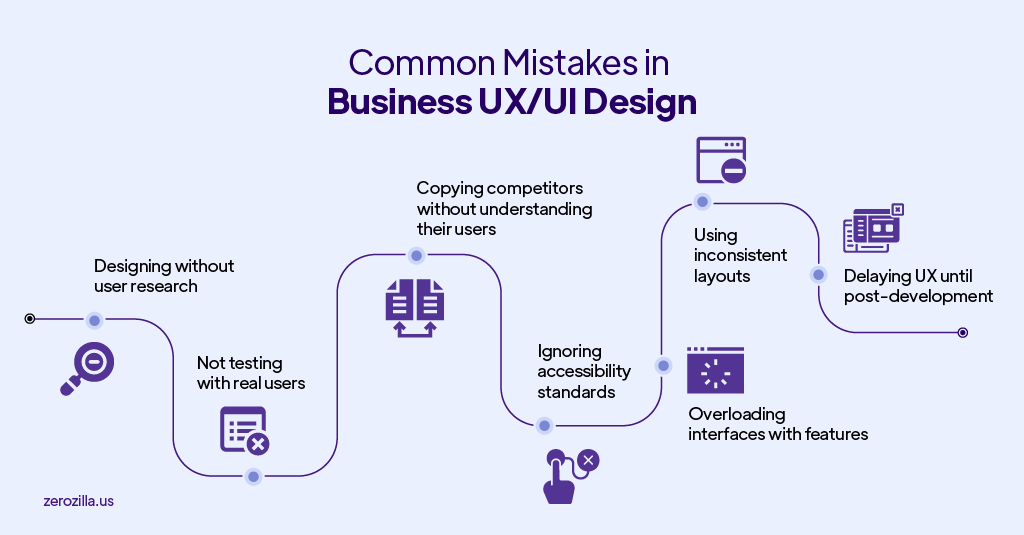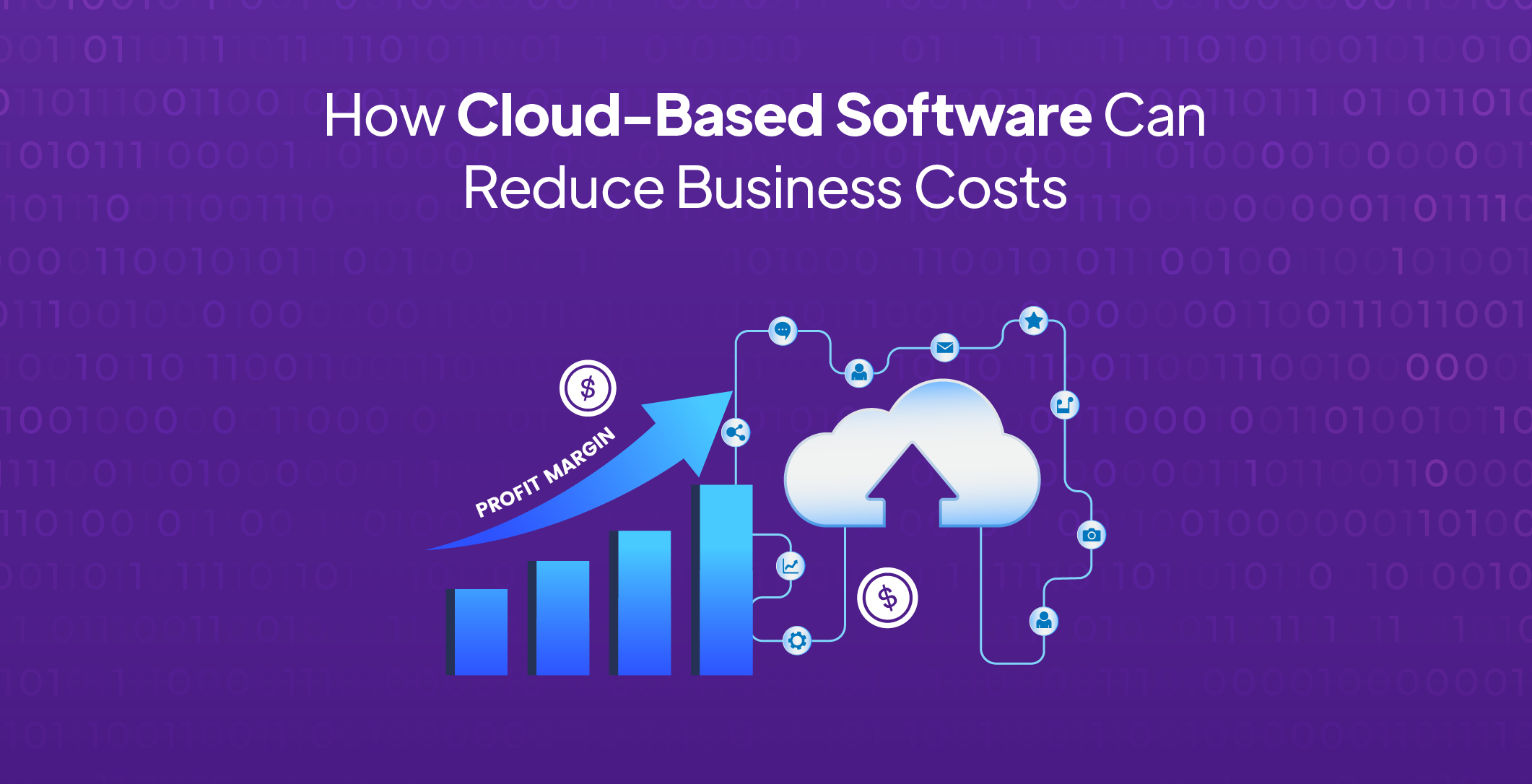In a digital-first world, UX (User Experience) and UI (User Interface) design are critical pillars of successful software, not just for consumer apps but for internal business systems as well. Organizations that overlook design often face challenges ranging from low user adoption and poor productivity to customer churn and lost revenue.
Defining UX/UI Design in a Business Context
- User Interface (UI) refers to the visual elements of software- layouts, typography, colors, buttons, and interaction patterns.
- User Experience (UX) encompasses how users interact with the software- including navigation flow, ease of use, performance, and emotional response.
For business software, UX/UI is not just about aesthetics. It’s about making tools intuitive, efficient, and productive for employees, customers, partners, and stakeholders.
Why UX/UI is More Than Just “Look and Feel”
Many business leaders still see design as something cosmetic, a “nice-to-have” that can be polished at the end. This mindset is outdated and risky.
Modern UX/UI:
- Informs how features are structured
- Impacts task completion speed
- Influences how users perceive the value of your software
- Plays a central role in digital adoption
In short: UX/UI affects business outcomes just as much as code quality or infrastructure performance.
The Impact of UX/UI on Software Development
UX/UI decisions made early in the software lifecycle have a direct impact on cost, feasibility, and development timelines.
- Design changes after UI development are costly. Once front-end components are coded, revising layouts, navigation structures, or interaction logic often means rewriting significant portions of the codebase. Proactively aligning UX decisions with technical feasibility saves both time and money.
- Lack of collaboration between UX designers and UI developers can lead to “unbuildable” designs—interfaces that look great on paper but are technically infeasible or inefficient to implement. Early involvement of developers ensures that design intent aligns with system architecture and performance constraints.
- Design-Development Handoff Quality directly affects sprint velocity. Poor documentation, missing assets, or ambiguous design systems lead to rework and misinterpretations.
- Iterative design and feedback loops between UX/UI teams and developers foster alignment, helping avoid “throw-over-the-wall” scenarios and enabling agile, user-driven improvements.
In essence, a strong UX/UI process reduces development friction, minimizes rework, and accelerates time-to-market.
Business Benefits of Good UX/UI Design
ere’s how thoughtful design translates to tangible business value:
- Increased Productivity
Well-designed interfaces help users complete tasks faster with fewer errors.
- Higher Adoption Rates
When software is easy to use, onboarding is smoother — users embrace the product instead of resisting it.
- Reduced Support Costs
Clear interfaces and workflows reduce user confusion and the need for training or support.
- Improved Customer Retention
For customer-facing portals or SaaS tools, a good UX keeps users engaged and loyal.
- Competitive Differentiation
In saturated markets, a great UI/UX can be the reason users choose your solution over others.
- Better Data Quality
Intuitive forms and validation reduce the risk of incomplete or inaccurate data input.
How Poor UX/UI Design Hurts Your Business
Let’s flip the coin. Poor design comes with high hidden costs:
- Frustrated users abandon tools or create workarounds (e.g., Excel exports).
- Training time increases, especially for non-technical users.
- Support tickets spike, creating workload for IT or customer service.
- Critical errors occur due to unclear workflows or poor validation.
- Business insights suffer due to bad data entry or low feature usage.
Companies often attribute these issues to users, when in fact they are design problems.
Indicators That Your Existing Application Needs a UX/UI Redesign
Even if your software is live and stable, there are measurable signs that its UX/UI needs improvement:
- High Bounce Rate: Users visit but don’t engage or complete key actions.
- Confusing Workflow: Users frequently get stuck or abandon processes midway.
- Increased Support Requests: Repetitive questions and tickets often signal unclear interfaces.
- Extended Training Efforts: If users need long training sessions to operate the tool, the design isn’t intuitive.
- Incomplete or Incorrect Forms: Indicates poor form validation, unclear labels, or confusing data entry.
- Low Feature Utilization: Advanced features remain unused because users can’t easily find or understand them.
- Frequent User Workarounds: Users rely on external tools (Excel, email) instead of your app’s built-in functions.
By monitoring analytics, support tickets, and user behavior data, you can identify friction points that highlight poor UX and quantify the ROI of redesigning.
Key Principles of Effective UX/UI for Business Applications
1. Clarity
Users should immediately understand what the interface does and how to interact with it.
2. Consistency
Buttons, labels, and actions should behave similarly across the software to build intuitive navigation.
3. Feedback
Users need clear responses to their actions (e.g., confirmation messages, loading indicators, error alerts).
4. Accessibility
Design should cater to all users, including those with disabilities (WCAG compliance).
5. Responsiveness
The UI should work across devices — from desktops to tablets and mobile phones.
6. Minimal Cognitive Load
Reduce unnecessary decisions, information, or complexity that overwhelms users.
7. Scalability
Design should anticipate future features, user roles, and workflows without requiring rework.
Enterprise UX vs Consumer UX: What’s the Difference?
Enterprise UX (internal systems) and Consumer UX (external users) have different goals but are equally important.
| Feature | Consumer UX | Enterprise UX |
| User Motivation | Voluntary use | Required for work |
| Interface Simplicity | High priority | Balanced with complexity |
| Design Constraints | Competitive differentiation | Legacy systems, integrations |
| Success Metric | Engagement, retention | Productivity, task accuracy |
Enterprise applications often need to balance complexity with usability, a challenge that requires specialized UX expertise.
The Role of UX/UI in Digital Transformation
Digital transformation isn’t just about migrating to cloud or automating processes, it’s about enabling people through technology.
UX/UI plays a pivotal role in:
- Enabling cross-department workflows
- Encouraging adoption of new tools
- Unifying user experiences across multiple platforms
- Making complex data actionable and readable
Without good design, even the best digital transformation initiatives can fail to gain traction.
UX/UI and Employee Productivity
Internal tools like CRMs, ERPs, HR portals, and analytics dashboards are essential, but often suffer from poor usability.
UX pain points that reduce productivity:
- Overcomplicated navigation trees
- Hidden features
- Poorly labeled buttons
- Confusing form validation
- Lack of shortcuts or keyboard commands
UX improvements that boost productivity:
- Role-based dashboards
- Smart defaults and auto-fill
- Predictive search
- Bulk actions
- Customizable views
Studies show that even a 20% reduction in click paths can save hundreds of hours per year in mid-sized teams.
UX/UI in Customer-Facing Platforms
When customers use your software (e.g., a SaaS tool, portal, or app), UX/UI becomes a sales and retention driver.
Good UX increases:
- Conversion Rates – Intuitive flows mean fewer drop-offs
- Customer Satisfaction – Easier interactions reduce frustration
- Feature Usage – Clear navigation encourages exploration
- Brand Perception – Clean, modern UI builds trust
Every pixel reflects your brand. So sloppy UI design can damage customer relationships even if your product is technically sound.
ROI of Investing in UX/UI Design
UX/UI isn’t just a cost. It’s an investment with measurable returns.
Research-based metrics:
- Every $1 invested in UX returns $100 (Forrester Research)
- User-centric design can reduce development time by 33–50%
- 70% of users abandon applications due to bad UX (UXCam)
- Redesigning a UI can increase productivity by 200% (NNG)
When measured across employee salaries, training, support, and customer churn, the returns are undeniable.

Avoiding these mistakes saves time, money, and future headaches.
How to Incorporate UX/UI Design Into Your Software Lifecycle
Discovery & Research
- Stakeholder interviews
- User journey mapping
- Persona creation
UX Strategy
- Information architecture
- User flows
- Wireframing
UI Design
- Visual identity
- Interaction design
- Prototyping
Validation
- Usability testing
- A/B testing
- Heatmaps and analytics
Development Handoff
- Design system documentation
- Pixel-perfect specs
- Collaborative feedback loop
Post-Launch Iteration
- User feedback collection
- Continuous improvement
Pro tip: Use tools like Figma, Adobe XD, InVision, and usability testing suites to streamline collaboration.
Final Thoughts: Design is Not Optional — It’s Strategic
UX/UI design is no longer a finishing touch — it’s a core business function. Whether you’re building an internal dashboard or a SaaS platform, good design can make or break adoption, productivity, and ROI.
Businesses that prioritize UX/UI:
- Empower their users
- Reduce operational friction
- Improve satisfaction across the board
- Stand out in crowded markets
Ignoring UX/UI is like building a house with no blueprint — you might get walls up, but it won’t be livable or scalable.
Zerozilla- Your UX/UI Design Partner
At Zerozilla, we blend aesthetics with functionality to deliver UX/UI designs that aren’t just beautiful, but effective. Whether you’re building enterprise software, B2B platforms, or mobile apps, our team ensures that every screen delivers business value.
From wireframes to high-fidelity interfaces, we embed user-centric thinking into every stage of your product lifecycle.
Want software your users will love and use?
Let’s Talk UX/UI. Partner with Zerozilla and transform your business software from “usable” to unforgettable.



